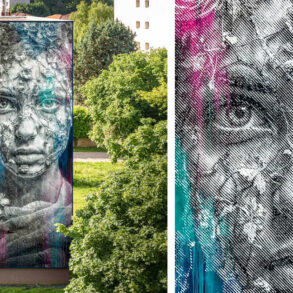Escaping the problems of the world and imagining life in a miniature universe can be surprisingly comforting. More than ever, people are finding joy in the work of artists who create tiny realms, whether they’re recreating real-life scenes or conjuring up magical ones. So, today, we’re excited to introduce you to the incredible works of Tamar Cohen, an artist from Montreal, whose miniature creations have been transporting people to the most fascinating places since 2021.
In an interview with Bored Panda, Tamar shared that in her opinion, the true magic of miniatures lies in their ability to evoke a personal narrative within each observer. “This is why I consciously choose to exclude figures from my scenes, preferring to empower viewers to craft their own stories and imagine the lives within,” wrote Tamar.
If you’re ready, we invite you to jump in and see which miniature artwork makes you want to shrink and explore it further.
More info: Instagram | tiktok.com | Facebook | patreon.com | msha.ke
Image credits: miniatureit
Tamar also walked us through her creative process.
“Each miniature project begins with a vivid mental image, which I then deconstruct into the necessary building stages, a more intricate puzzle when incorporating lighting. Whether I’m envisioning a room or a piece of furniture, I analyze the steps required to bring it to life. Material selection is always driven by the project’s demands, and the practicalities of secure, lightweight shipping are a constant consideration. I often start by constructing the floor, as it provides an immediate framework for the scale. Interestingly, my approach to scale involves prioritizing the visual coherence and harmonious fit of elements over strict adherence to measurements, allowing my eye to guide the process.”
Image credits: miniatureit
Image credits: miniatureit
As for the materials and tools, Tamar shared her preferences when working on such a small scale.
“I find a deeper connection to my miniature work when I can directly feel the materials, which is why I typically avoid gloves, tweezers and a magnifying glass, making exceptions only when necessary. My background in jewelry making has made a jewelry saw an extension of my hand, a tool I use constantly. Initially, I worked with whatever materials were available, but I now often specify balsa for its user-friendly nature and paintability, along with particular glues. Despite having access to a laser cutter and a 3D printer, I often prefer the intuitive control of my hand saw. Ultimately, I believe the most vital instrument in this craft is the spark of creativity that allows one to transform humble materials into something truly exceptional.”
Image credits: miniatureit
Image credits: miniatureit
Moreover, Tamar expanded on the topic of what emotions or stories she tries to capture with her work.
“When I create a miniature setting, I immerse myself in the moments just before the scene becomes still, or the anticipation of what is about to unfold. The presence of an open book hints at a recently interrupted reader, a kitchen table displaying freshly baked bread suggests an imminent meal, and open scrolls in a castle chamber imply ongoing study of secret plans. Even the suggestion of what lies beyond a closed door can spark a multitude of possibilities. By carefully curating the atmosphere through specific colors and evocative props, I aim to plant subtle clues that ignite the imagination and allow each viewer to become the author of their own miniature tale.”
Image credits: miniatureit
Image credits: miniatureit
Lastly, Tamar shared what has been the most challenging piece to date.
“If I had to pinpoint the miniature piece that tested my skills the most, it would undoubtedly be ‘The Greenhouse Library,’ created in 2023. The primary obstacle lay in the intricate, curved, handmade roof. I began with several cardboard mockups to determine the precise shape, dimensions, and angle of the supporting structure. Once the design felt right, I meticulously cut sixteen supports from sturdy MDF using my saw. To achieve the desired greenhouse aesthetic, I finished the roof with Plexiglas, which not only reflected light beautifully but also added significant stability to the overall structure. The Art Nouveau aesthetic served as the foundation for the greenhouse’s entire structure, a choice that, while inspiring, also presented substantial challenges and necessitated significant creative problem-solving.”
Image credits: miniatureit
Image credits: miniatureit
Image credits: miniatureit
Image credits: miniatureit
Image credits: miniatureit
Image credits: miniatureit
Image credits: miniatureit
Image credits: miniatureit
Image credits: miniatureit
Image credits: miniatureit
Image credits: miniatureit
Image credits: miniatureit
Image credits: miniatureit
Image credits: miniatureit
Image credits: miniatureit
Image credits: miniatureit
Image credits: miniatureit
Image credits: miniatureit
Image credits: miniatureit
Image credits: miniatureit
Image credits: miniatureit
Image credits: miniatureit
Image credits: miniatureit
Image credits: miniatureit
Image credits: miniatureit
Image credits: miniatureit
Image credits: miniatureit
Image credits: miniatureit
Image credits: miniatureit
Image credits: miniatureit
Image credits: miniatureit
Image credits: miniatureit
Image credits: miniatureit
Image credits: miniatureit
Image credits: miniatureit
Image credits: miniatureit
Image credits: miniatureit
Image credits: miniatureit
Image credits: miniatureit
Image credits: miniatureit
Image credits: miniatureit
Image credits: miniatureit
Image credits: miniatureit
Image credits: miniatureit
Image credits: miniatureit
Image credits: miniatureit
Image credits: miniatureit
Image credits: miniatureit
This post was originally published on this site be sure to check out more of their content.








